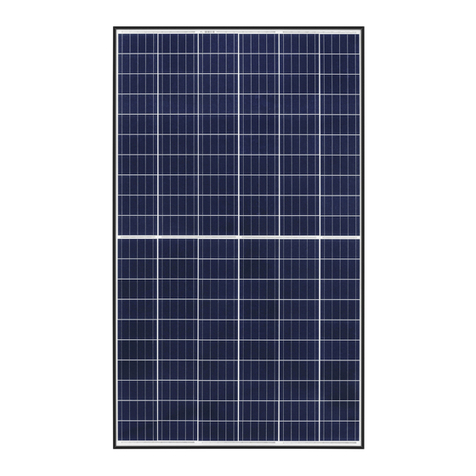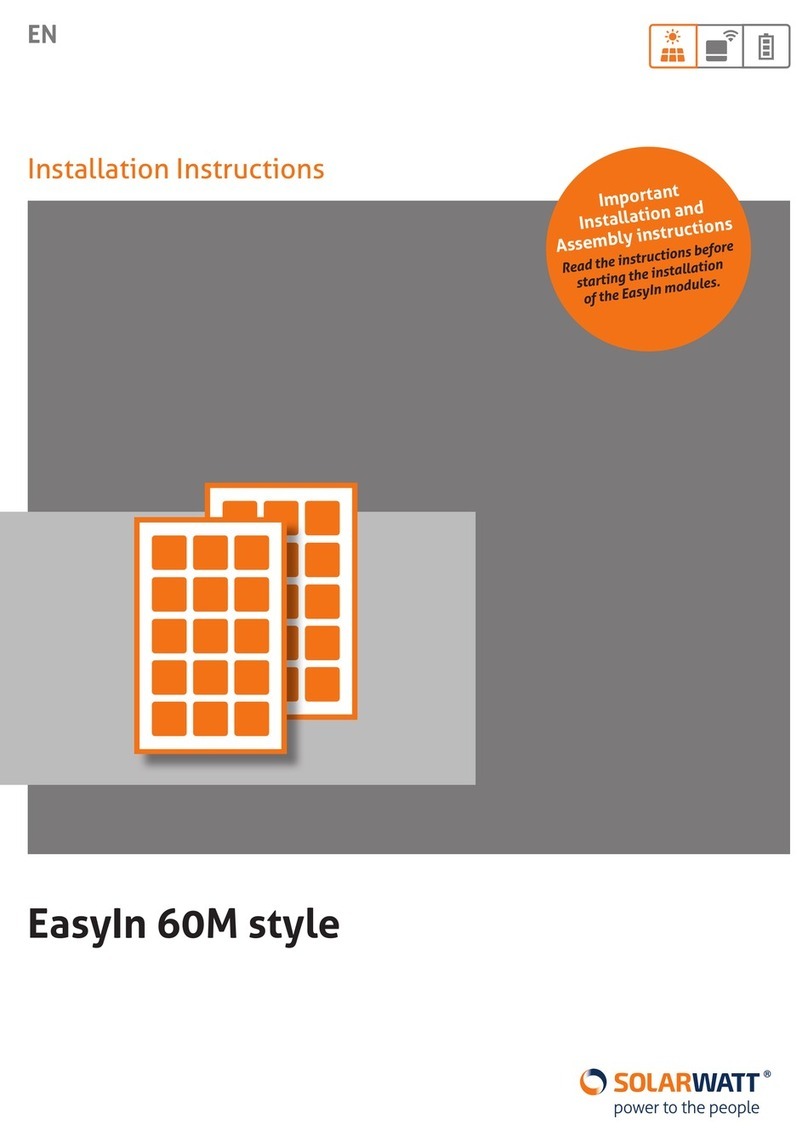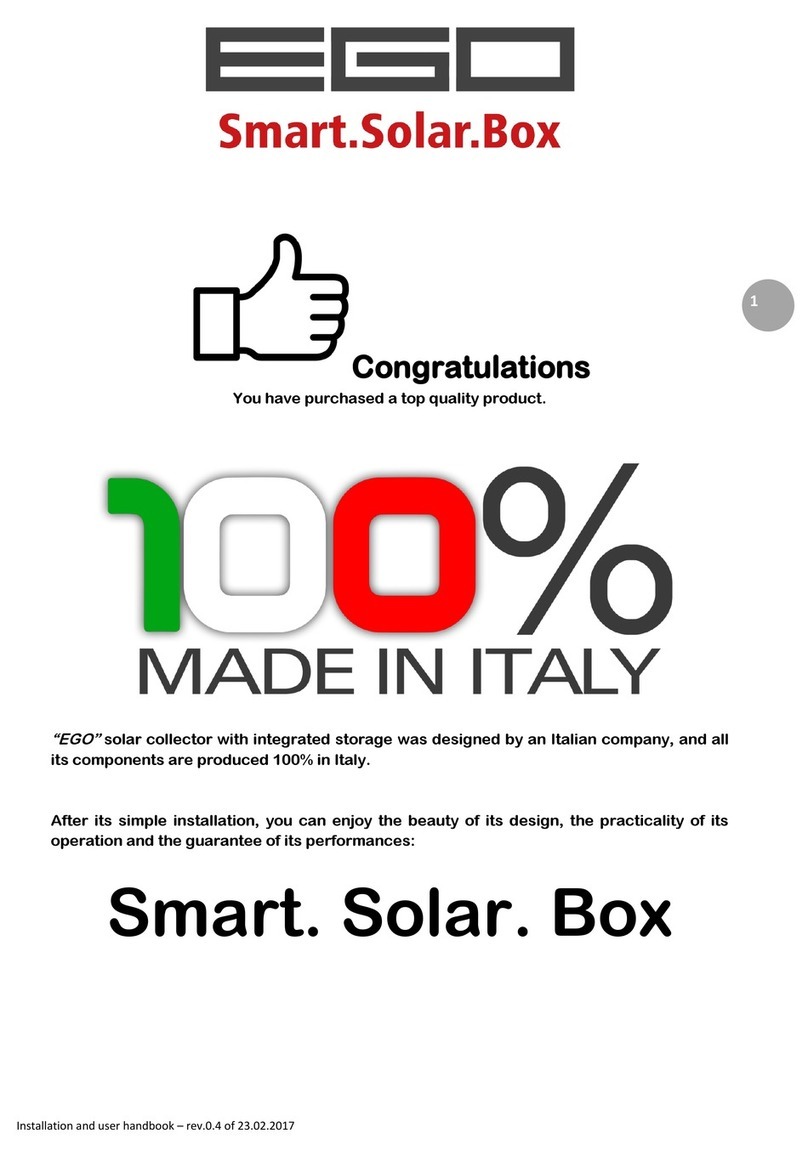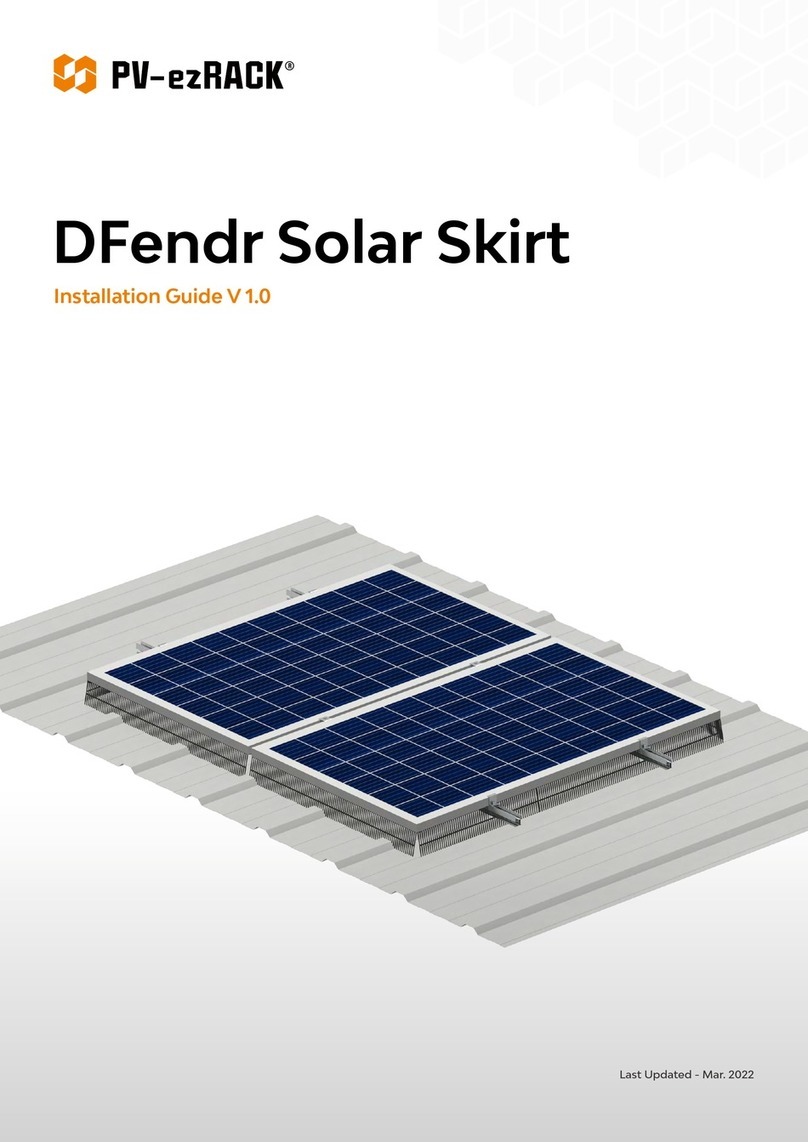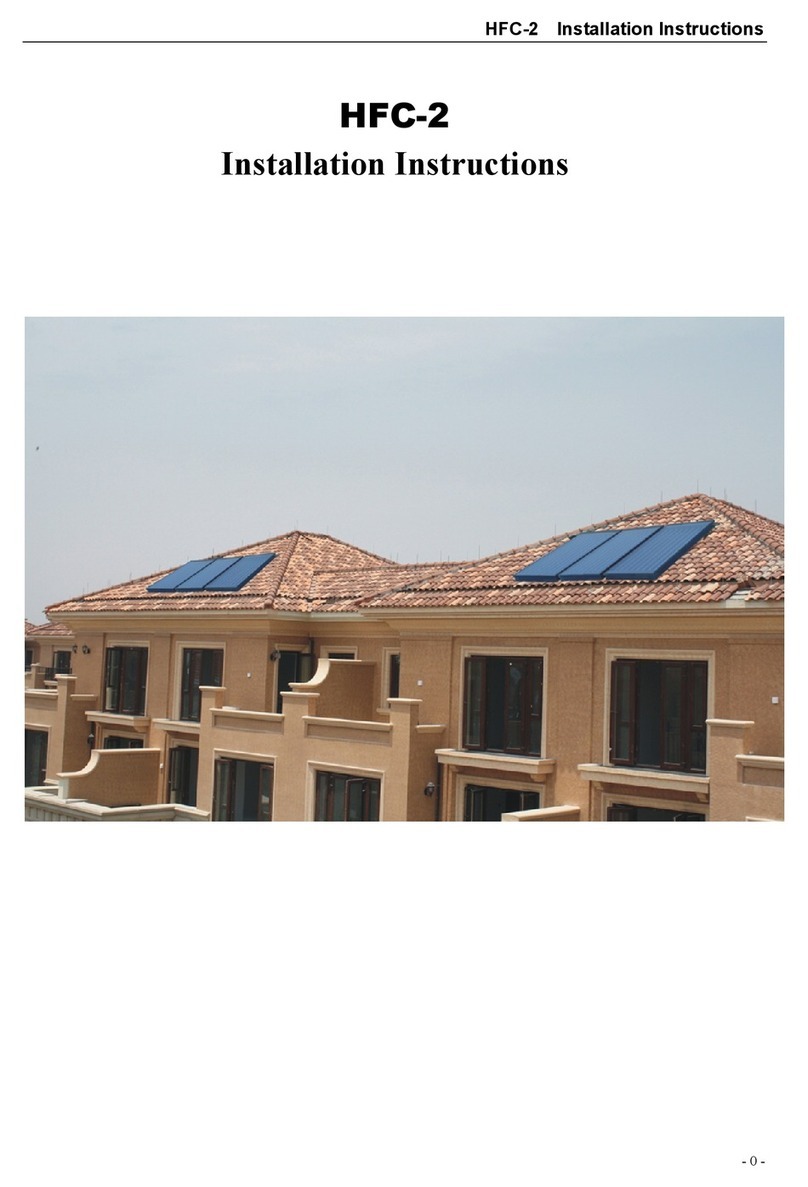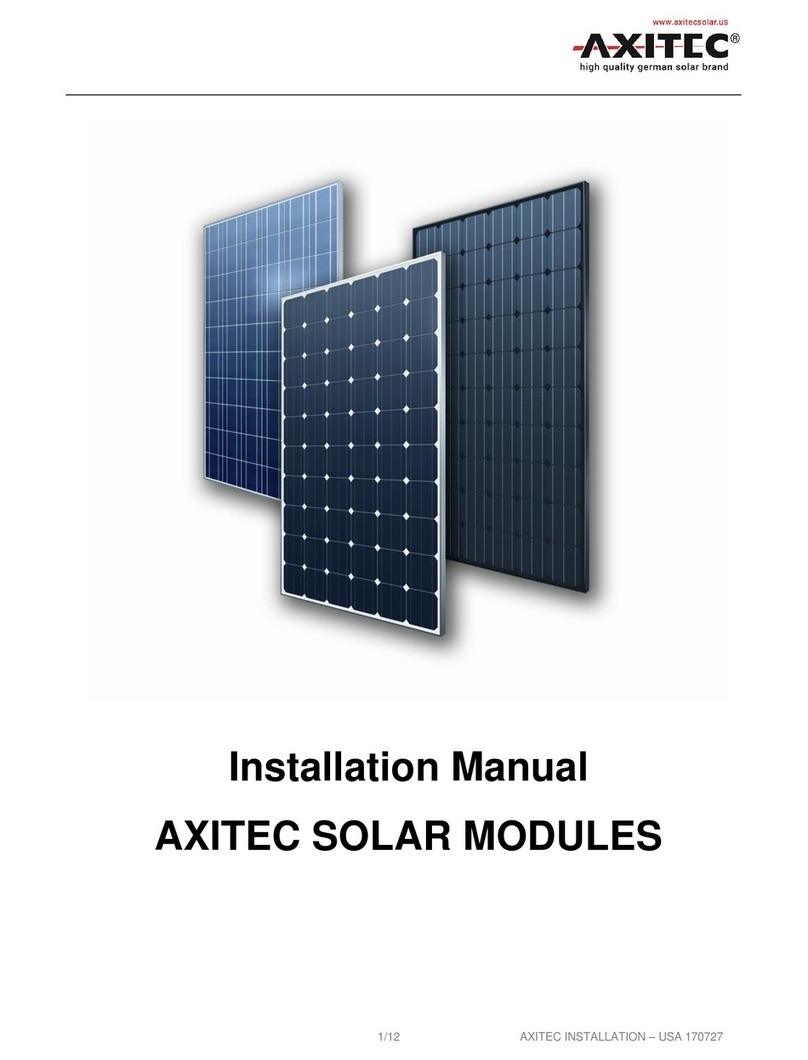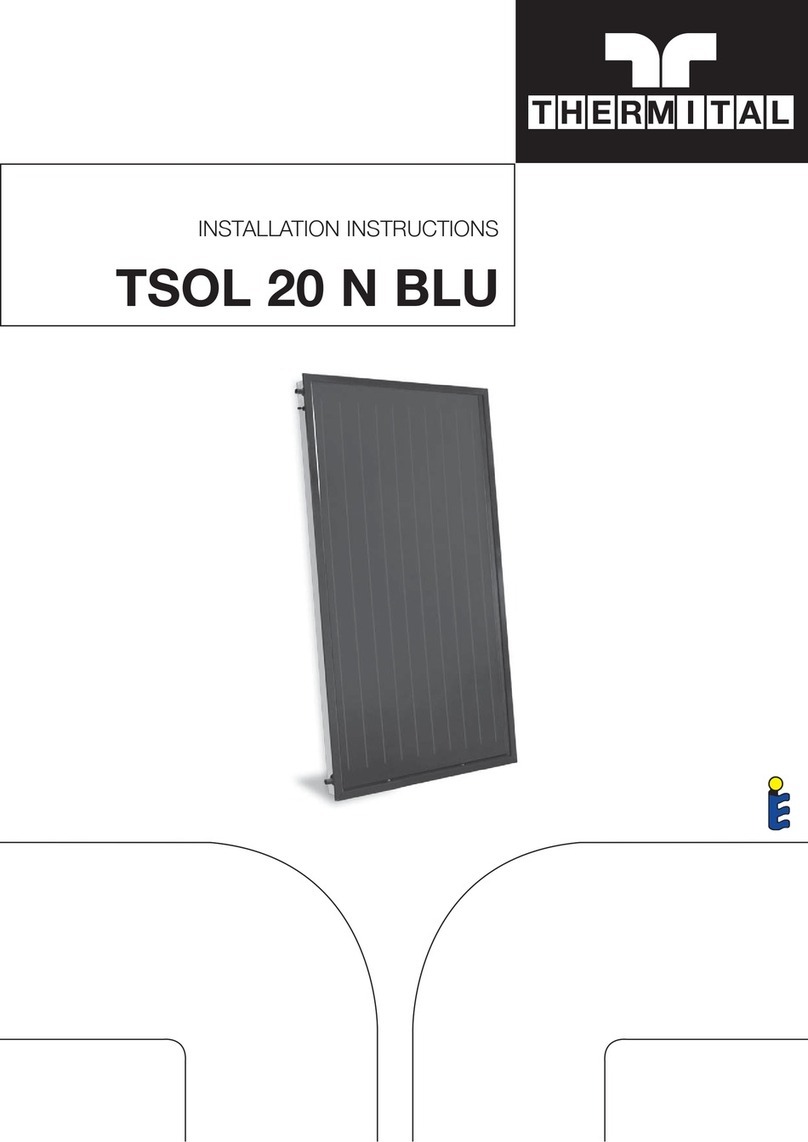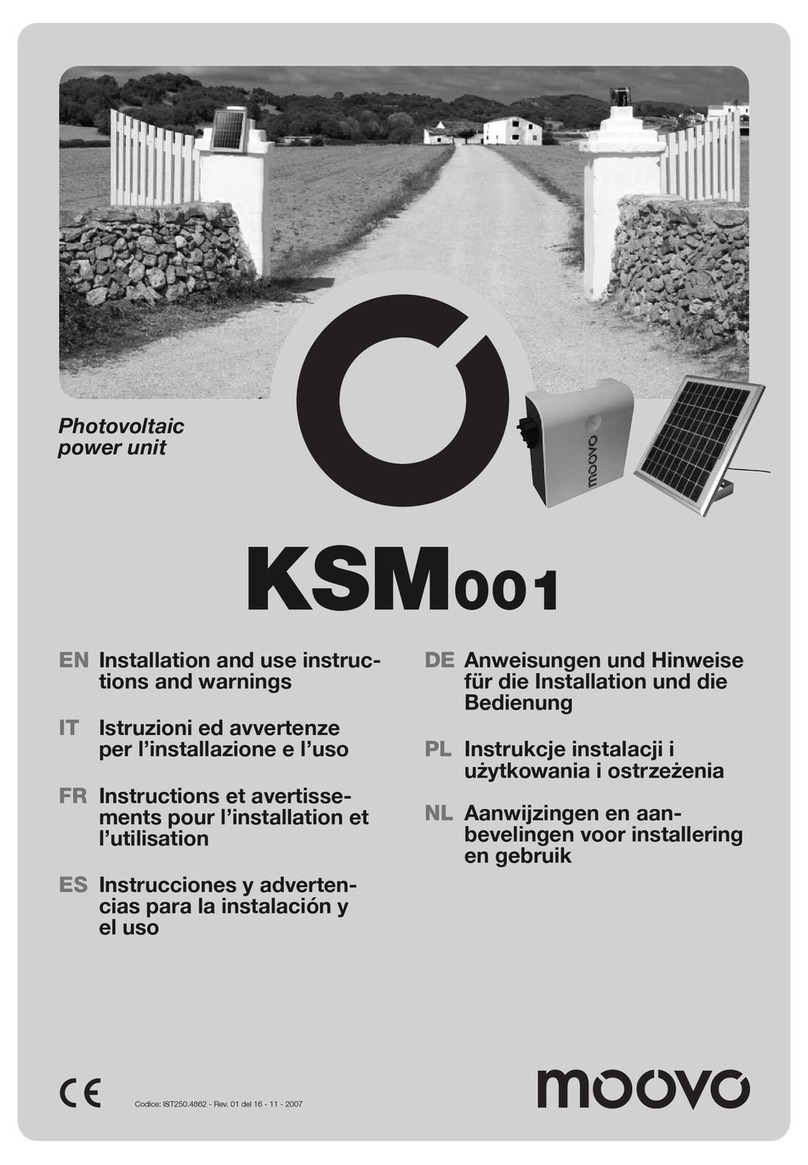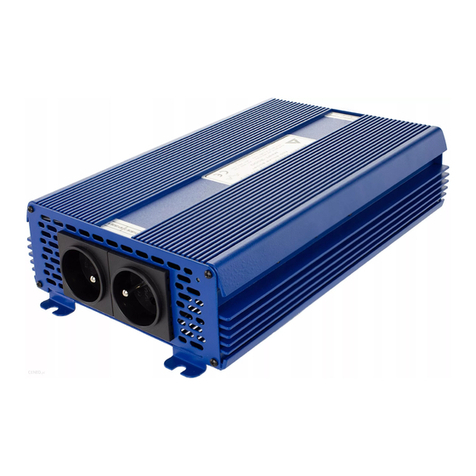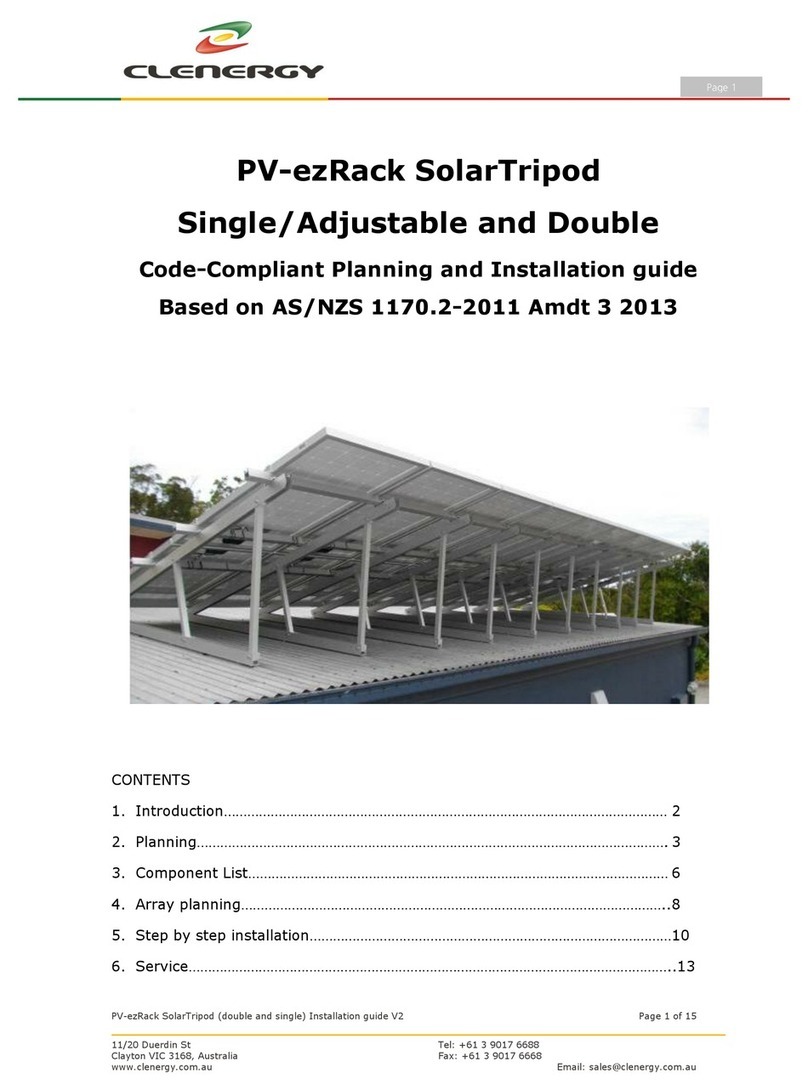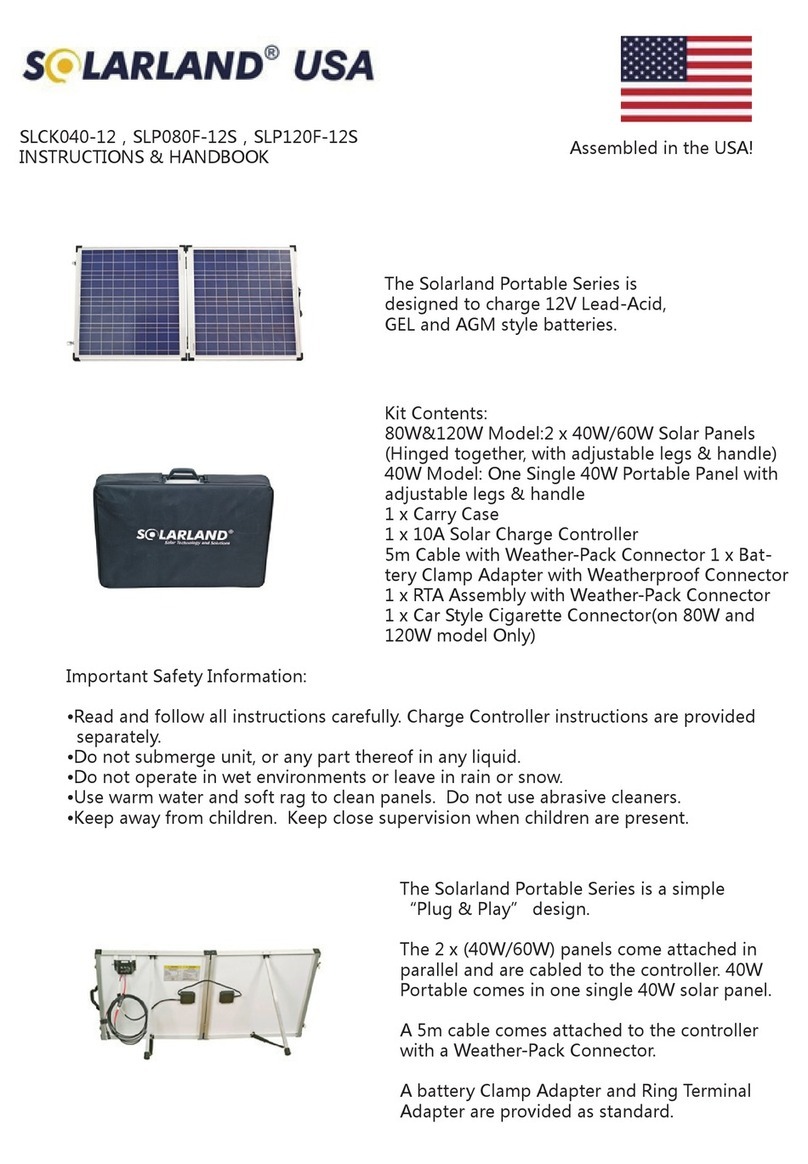
10
Technical manual – Installation instructions and start-up X-RAY R - ver. 1.0 del 07/11/2018
TECHNICAL DATA
THE BENEFITS REFER TO THE GROSS SURFACE ACCORDING TO EN ISO 9806: 2013
modelli X-RAY R 10 R X-RAY R 11 R X-RAY R 12 R X-RAY R 13 R X-RAY R 14 R X-RAY R 15 R
TECHNICAL DATA
Evacuated tubes [ N ] 10 11 12 13 14 15
Measurements
(length x width x
height)
[ mm ] 1106 x 1921 x 114 1216 x 1921 x 114 1326 x 1921 x 114 1436 x 1921 x 114 1546 x 1921 x 114 1656 x 1921 x 114
Gross surface area [ m² ] 2,12 2,34 2,55 2,76 2,97 3,18
Aperture Area [ m² ] 1,91 2,11 2,29 2,48 2,65 2,87
Absorber
surface 360°
[ m² ] 2,57 2,82 3,09 3,34 3,59 3,85
Weight when empty [ kg ] 40,0 43,6 48,2 52,8 54,5 58,2
Fluid content [ lt ] 1,78 1,96 2,15 2,35 2,5 2,68
Max test pressure [ bar ] 10 10 10 10 10 10
Recommended
capacity
[ l/min ] 1,50 1,65 1,80 1,95 2,10 2,25
Peak Power [ W ] 1272 1404 1530 1656 1826 1955
Optical eciency [ % ] 60,0 60,0 60,0 60,0 61,5 61,5
Tramittance
coecient a1
[ W/m²K ] 0,910 0,910 0,910 0,910 0,850 0,850
Tramittance
coecient a2
[W/m²K² ] 0,013 0,013 0,013 0,013 0,009 0,009
Absorber
coecient
[ % ] 92 92 92 92 92 92
Emission
coecient
[ % ] 6,5 6,5 6,5 6,5 6,5 6,5
Coecinet transfer
of the glass
[ % ] 92 92 92 92 92 92
Connections [ Ø ] 4-6 x 3/4 " M 4-6 x 3/4 " M 4-6 x 3/4 " M 4-6 x 3/4 " M 4-6 x 3/4 " M 4-6 x 3/4 " M
Stagnation
temperature
[ °C ] 176 176 176 176 176 176
Head insulation
thickness
[ mm ] 30 30 30 30 30 30
Diameter - vacuum
pipe length
[ mm ] 58/47 - 1800 58/47 - 1800 58/47 - 1800 58/47 - 1800 58/47 - 1800 58/47 - 1800
Recommended
inclination
[ ° ] 15 - 75 15 - 75 15 - 75 15 - 75 15 - 75 15 - 75
Incidence angle
correction factor
[ K50° ] 1,05 1,05 1,05 1,05 1,05 1,05
Energy produced
annually EN 12975 -
Wurzburg - Tempe-
rature 50°C
[ kWh ] 1231 1359 1481 1603 1844 1974
Test report EN
12975-2
[ - ] RP.2018.
COL.202a.1
RP.2018.
COL.202a.1
RP.2018.
COL.202a.1
RP.2018.
COL.202a.1
RP.2018.
COL.202b.1
RP.2018.
COL.202b.1
DIN CERTCO number
of registration
[ - ] 16084 Rev.0 KIWA 16084 Rev.0 KIWA 16084 Rev.0 KIWA 16084 Rev.0 KIWA 16083 Rev.0 KIWA 16083 Rev.0 KIWA
